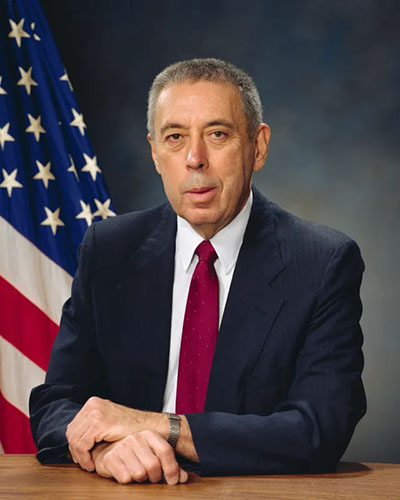NASA Luminary Had a Key Role Across the History of Human Spaceflight
George W. S. Abbey, who had a key role in the American human spaceflight program lasting decades, passed on March 24. Abbey’s path to aerospace began as a pilot in the U.S. Air Force with over 4000 hours of flight time, followed by work on U.S. Air Force’s planned Dyna-Soar rocket plane program. Upon its cancellation in 1963, Abbey was assigned to work with NASA on the Apollo program, and 1967 he left the Air Force to become the Director of Flight Operations at the Johnson Space Center where he oversaw operational planning and management of crew and flight control activities for the Apollo flights.
In 1983, as the space shuttle began routine operations, he continued to oversee crew activities and was in large part responsible for assigning Sally Ride to be the first woman to fly aboard an American spacecraft and assigning six women, three African American men, and an Asian man to flight crews. In 1988 Abbey was appointed the Deputy Associate Administrator for spaceflight at NASA headquarters and in 1990 became the Deputy for Operations and senior NASA representative to the Synthesis Group, which defined strategies for a U.S. return to the Moon and eventual flights to Mars.
In 1991, Abbey became the Senior Director for Civil Space Policy for the National Space Council, a NASA advisory group, working under then-Vice President Dan Quayle. Under Abbey’s leadership the council began investigating cooperation with Russia in human spaceflight after the fall of the Soviet Union that same year.
In 1992 Abbey was named as the Special Assistant to the NASA Administrator, and in 1994 became the Deputy Director of the Johnson Space Center and was appointed as the Director of the center in 1996, serving in that post until 2001. During his tenure he oversaw JSC’s role in the shuttle-MIR flights and the development and construction of the International Space Station.
National Space Society CEO Anita Gale said of Abbey: “George was legendary at Johnson Space Center in more ways than the press can report. While handling his major responsibilities, he also tended to details that enriched the culture of JSC. I heard stories from friends of how he carefully mentored new astronauts, and I personally witnessed his support for outreach to students.” Gale is a veteran of the space shuttle program, working as an aerospace engineer in a number of capacities.
Abbey left NASA in 2003 to join Rice University’s Baker Institute for Public Policy. Among Abbey’s numerous awards are the NASA Exceptional Service Medal, the NASA Outstanding Leadership Medal, and three NASA Distinguished Service Medals. He also received the Presidential Medal of Freedom for his role in bringing the crew of the crippled Apollo 13 home safely and the Robert R. Gilruth Award for his contributions to human spaceflight. Finally, in 2007, Abbey was granted the Sir Arthur C. Clarke Award for his overall contributions to the U.S. space program.
Rod Pyle, Editor-in-Chief of the NSS premiere magazine, Ad Astra, and numerous space histories, said, “Abbey always stood tall among the leaders of NASA. His efforts to assure the country’s leadership in space make a long list but suffice it to say he was central to NASA’s efforts to build and maintain a permanent human presence in space, and to continuously strive to expand that presence in a fair and equitable way.”



















